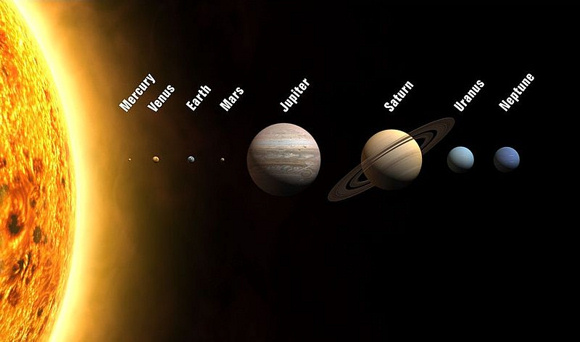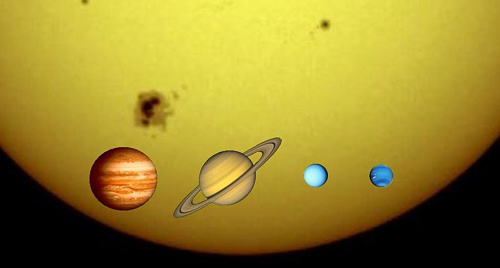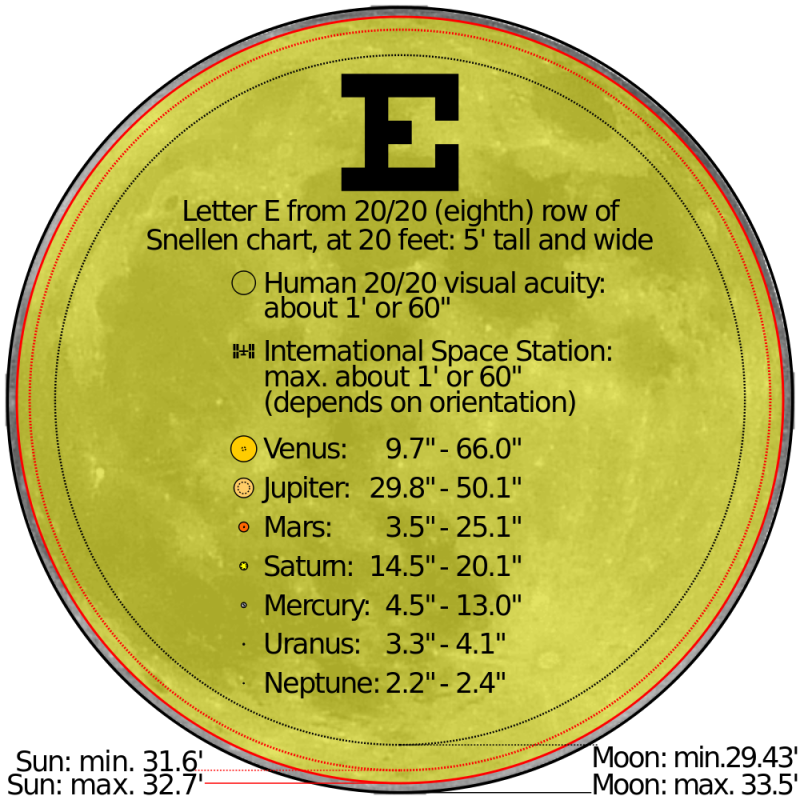From November 18 to 21, 2020, as darkness falls, use the waxing crescent moon to locate the gas giant planets Jupiter and Saturn, now headed for their once-in-20-years great conjunction on the December 21 solstice. Jupiter is the brighter of these two worlds, outshining Saturn by 12 times. Even so, Saturn is respectably bright, shining as brightly as a 1st-magnitude star. And, of course, in our November 2020 sky, these two worlds – Jupiter and Saturn – are exceedingly noticeable for their nearness to each other.
EarthSky’s lunar calendar is now available. Order yours before they’re gone! Makes a great gift.
This upcoming Jupiter-Saturn conjunction will be the closest Jupiter-Saturn conjunction since July 16, 1623. These two worlds will be within 6 arc minutes (0.1 or 1/10 degree) of one another on December 21, 2020.
A similarly close conjunction of Jupiter and Saturn won’t happen again until March 15, 2080!
Look first for Jupiter – brightest starlike object up each evening – and that nearby golden “star” will be the planet Saturn.
At present, Jupiter and Saturn lodge about 4 degrees apart from one another on the sky’s dome. For reference, the width of two fingers at arm’s length approximates 4 degrees of sky. Day by day, Jupiter is moving closer and closer to Saturn on our sky’s dome now. These two giant worlds will meet for their glorious conjunction on December 21.
The last time these two worlds were in conjunction was on May 31, 2000, and after this upcoming conjunction on December 21, 2020, the next time won’t be until November 5, 2040.


At conjunction, Jupiter and Saturn won’t be truly close together in space. They’ll just be chugging along as usual, in their vast orbits around the sun. But they’ll appear near each other along the our line of sight from Earth. At their conjunction on December 21, 2020, Jupiter will be nearly 6 astronomical units (AU) from Earth, while Saturn will be nearly 11 AU away. One AU = sun-Earth distance of approximately 93 million miles or 150 million km.
Despite their great distances from Earth, these planets nonetheless shine brilliantly in Earth’s sky because they’re huge worlds that effectively reflect sunlight. Jupiter has a volume of over 1,300 Earths; that is, 1,300 Earths could fit inside Jupiter. Meanwhile, Saturn has a volume of over 760 Earths. Additionally, Jupiter reflects 52% of incoming sunlight while Saturn reflects 47% of its incoming sunlight. In contrast, Earth’s moon only reflects about 12% of the sunlight that strikes its surface.
Saturn is the most distant world that you can easily see with the unaided eye. Although you need a telescope to view Saturn’s rings, the rings are tilted toward Earth in 2020, which adds all the more to Saturn’s apparent brilliance as seen from Earth.
Although Jupiter and Saturn will be more distant from Earth on their conjunction date than they are now, their magnitudes will remain nearly the same. Right now, Jupiter’s angular diameter equals 35.4 arc seconds, to shrink to 33.3 arc seconds by December 21, 2020. As for Saturn’s angular diameter, it’ll decrease from 15.9 to 15.4 arc seconds.
Read more: Before 2020 ends, a great conjunction of Jupiter and Saturn

Bottom line: On November 18-21, 2020, use the moon to locate the gas giant planets Jupiter and Saturn. The moon will be especially near these worlds on November 18 and 19. Its lighted face will point to them on November 20 and 21. Then watch – day by day, into the month of December – as Jupiter closes the gap between itself and Saturn on our sky’s dome. At the December solstice – December 21, 2020 – we’ll witness the closest Jupiter-Saturn conjunction since July 16, 1623.











